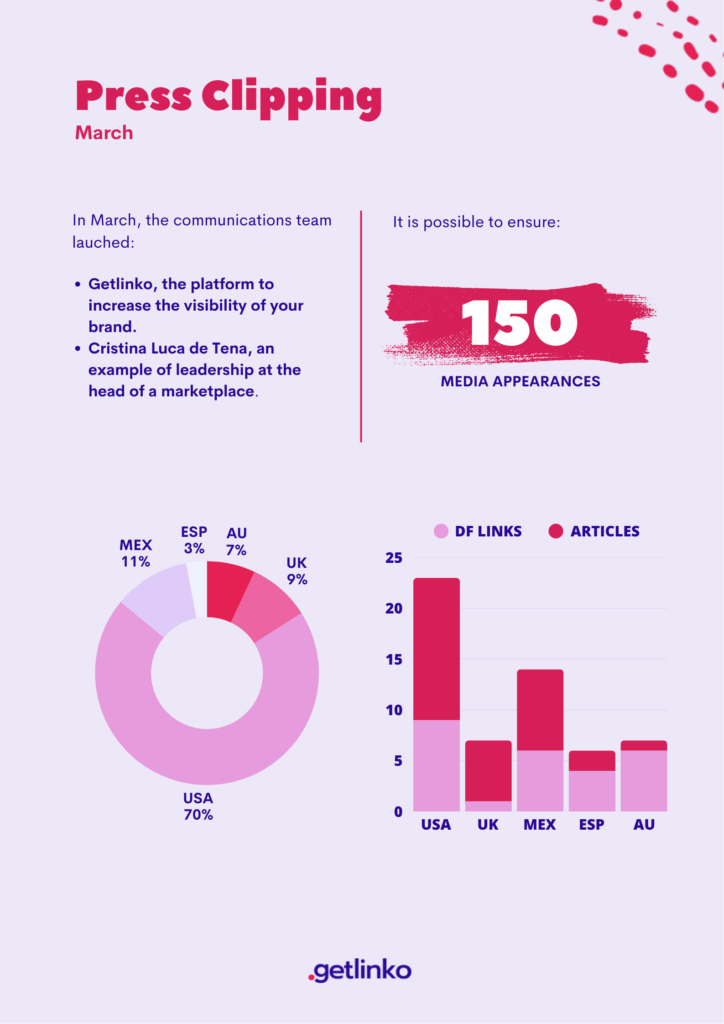Online Reputation Crisis: What to do and how to react?
This time we are going to talk about press clipping, show you a practical example and answer the main questions that usually arise. Although this task began in traditional media such as television, radio or the written press, over time it has adapted and today it also includes the digital media that we use every day.
In their origins they were made manually: each newspaper was reviewed one by one and the pages dealing with the topic of interest were selected from them and filed in folders or filing cabinets intended for that purpose.
With the passage of time and technological development the procedure changed quite a lot, but let’s go by parts. If you still don’t know what they are, here we will tell you about them along with their importance, the types that exist, their benefits and how you can do it.
What is a press clipping?
A press clipping is the compilation of the different appearances that your brand has in both traditional and digital media. The term “clipping“, which in Spanish means ”cutting”, comes from the time when the cuts collected were physical and the entire process was done manually. Now, with the advancement of technology the method has changed substantially and its scope has been extended quite a lot, but let’s go point by point.
What are press clippings for?
Press clipping serves to manage your brand, since this way you can easily have organized and locate all the appearances that you have made over time in all the existing media, both traditional and digital.
This will allow you to observe how people’s perception of your brand is evolving over time, something very useful for marketing agencies and communication departments in general.
Some other reasons why press clipping is useful is because it allows you to evaluate the work that the marketing agency or the communication department is doing and in that sense be able to take the necessary guidelines to improve their weak points.
In addition, with press clipping you will be able to recognize which media outlets make hostile or negative references to your brand, those that handle inaccuracies and their impact on the public’s perception of your brand. Pretty useful, right? And even though we haven’t told you about its benefits yet.
Benefits of press clipping
After what I have mentioned there is no doubt about the usefulness of press clipping in any digital marketing agency, but you may still not understand the amount of benefits they offer for the objectives of your campaign, let’s see what they are:
- It is easier to identify the actions of the competition and always stay one step ahead
- You will be able to change the image of your brand and improve the perception that your audience has of it
- This, in turn, will give you the opportunity to increase the target audience you are targeting
- In addition, you will always be aware of the new trends in your sector and keep up to date
Look at it this way: the press clipping is like a scrapbook in which you can observe how your hairstyle and your outfit have been changing, and the reactions that they have provoked in the people around you. In short, they are a clear picture of how the image of your brand has been evolving over time and the reputation it has formed in the minds of its consumers and potential customers.
What are the types of clipping that exist?
A press clipping can be structured in several ways depending on the focus you want to give it, whether it’s giving relevance to a particular topic about your brand, or about the duration of a specific event of it, or the coverage that the media has given it over time, or even putting the focus on some geographical place and the impact it generated there.
All in order to achieve multiple objectives, such as building an appropriate image for your brand according to its presence in the media, improving its reputation and positioning, detecting new communication opportunities and even being able to prevent a possible brand crisis.
What other objectives does the press clipping have?
In addition to the objectives mentioned above, press clipping also allows to achieve the following objectives:
- Thanks to them you will be able to effectively control the discourse that occurs about your brand in marketing agencies or communication departments, and verify if the message you are sending to the audience is the right one
- It is also possible to measure the impact that the different press campaigns have had on your brand and
- Getting to know the journalists specialized in your sector, something necessary to build trust and solid links that ensure the presence of your brand in the media
Example of press clipping
How to make a press clipping
The following are the steps you should take to put together a press clipping that perfectly fulfills its function:
1. Determine the frequency with which you are going to make the clippings
This will depend on the characteristics of your brand and the sector in which you move; there are some agencies that perform this task on a weekly basis, while others do it biweekly or monthly, the important thing is that you are constant once you determine the frequency.
2. Define the monitoring tools that you will use
A good clipping should contain each and every one of the mentions that have been made about your brand in the media, but achieving this is not an easy task, you must first choose the right monitoring tool for your objectives.
There are many available in the current digital market, with a quick Google search you will find several of them, just make sure that the media of your country are included.
3. Determine the points to be evaluated
You already have the tools, now it is necessary to define what you are going to evaluate with them. It can be the number of times your brand is mentioned in the media, or the traffic that such publications cause, or also the number of mentions that they make of it on social networks.
Defining the indicators that you are going to evaluate is necessary to know what you are going to look for among so much data and focus your efforts.
4. Classify the appearances according to the medium
At this point it’s about determining the traditional and digital media in which your brand has made an appearance.
It is important that you have them well located when making the categorization so that you can start dividing the appearances between traditional media, which in turn are divided into radio, press, television, etc. And digital media, which are divided into social networks, podcasts, web pages, etc.
5. Analyze the emotional tone of each appearance
Study the way each medium talks about your brand, do they make positive, negative or neutral mentions? This should be taken as a report that qualitatively indicates the impact that your brand generates in the market and how this affects its positioning.
6. Compile all the information in one document
The last step in the construction of a press clipping is to create a visual document in which, through texts and graphics, all the data obtained are recorded concisely and clearly.
The clearer the document, the easier it will be to make decisions that will help improve your position in the media in the short and medium term.
Always keep in mind that, even if it seems like a tedious and slow task, creating a press clipping will allow you to have a “history” of the look that the public eye has on your brand over time, which gives you the possibility of taking intelligent actions for the improvement of your business, so are you ready to start?
Te podría interesar
These are the 20 best SEO tools to improve your SEO
Search engine optimization (SEO) is one of the most important strategies in digital marketing. It allows you to impro...
10 copywriting techniques to sell more with your copy.
Did you know that texts on the web are a fundamental piece to better convey the...






